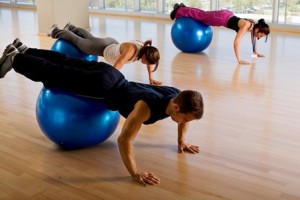By: Alison Hall
Terms to know:
Macrocycle: long-term training period, usually between six months and one year
Mesocycle: smaller phases within the macrocycle, usually several weeks to a few months
Microcycle: each part of the mesocycle, usually one week
Periodization is not a new concept—in fact, the founding principles of periodization can be traced back to ancient Greece.1 It was developed in the 1950s by former Eastern Bloc countries to train their athletes to adapt to endurance training.2 The National Academy of Sports Medicine (NASM) defines periodization as the “division of a training program into smaller, progressive stages.”3 This definition creates a lot of questions. How many stages? How small? How often to progress? While there are many answers to these questions, researchers have developed three straightforward programs: linear, reverse linear, and undulating.
In linear periodization—sometimes called classic periodization—strength training progresses from a low intensity to a high intensity across the entire macrocycle, generally progressing from high repetitions of lighter resistance to low repetitions of higher resistance. The goal is to increase strength and power.2 If you were following a six-month macrocycle, the first eight-week mesocycle would consist of high repetition, relatively low-weight strength training. Each weekly microcycle would involve changes, such as lifting 5 percent more weight while keeping good form. The second eight-week mesocycle would focus on strength, and the intensity of each workout increases. The number of repetitions per set decreases, but the amount of weight lifted and number of sets per muscle group increases. The third eight-week mesocycle focuses on power. The intensity increases again, lifting heavier weights for fewer sets with fewer repetitions per set. The amount of rest between each set increases as well.
Reverse linear periodization takes the linear plan and runs it backward. Mesocycle one would start with a heavy weight doing fewer sets of fewer repetitions. Mesocycle two would be the same as in a linear plan, then mesocycle three would involve more sets with more repetitions of lighter weights. Microcycles would be manipulated the same way as in a liner plan. Research has found that this type of training to increase muscular endurance more, but strength less, than linear or undulating periodization.4
Undulating periodization does not follow the same type of pattern as the other two types. Undulating periodization usually follows a fourteen-day mesocycle with three or four different workouts.2 With this type of plan, both the intensity and the number of sets and repetitions per set change from workout to workout. When a mesocycle ends, you can take a rest break or start over with another fourteen-day plan. This type of training is good for athletes who need time off from intense strength training for a competition. It also takes less planning, and it is easier to change your plan if you are feeling tired or sick one day or have extra time to do more another day. Research has found this type of training is equally effective or even more effective than linear models for gaining strength. In one study, subjects training in a twelve-week undulating periodization program increased chest press strength 14 percent more and increased leg press strength 30 percent more than subjects training in a twelve-week linear program.5
So what is best for you? If you have a long-term goal of strength and power, try linear periodization. If you want to increase muscle endurance, try a reverse linear periodization plan. If you have more short-term strength goals, are training for events that happen on a regular basis, or like to change things up more often, then undulating periodization could be for you. Whatever you choose, make sure you can do every repetition of every exercise with good form and in a safe environment.
References:
- DeWeese HB, Gray HS, Sams ML, Serrano SK, Ambrose J. The Power of Sport. Olympic Coach. 2013:24(1);5-20.
- Herodek K, Simonovic C, Rakovic A. Periodization And Strength Training Cycles. Activities In Physical Education & Sport. 2012:2(2);254-7.
- Clark MA, Lucett SC, Sutton BG, eds. NASM Essentials of Personal Fitness Training, 4th edition, p. 607. Philadelphia, Lippincott Williams & Wilkins, 2012.
- Rhea MR, Phillips WT, Burkett LN, Stone WJ, Ball SD, Alvar BA, Thomas AB. A Comparison of Linear and Daily Undulating Periodized Programs With Equated Volume and Intensity for Local Muscular Endurance. Journal of Strength and Conditioning Research. 2003:17(1);82–87
- Rhea MR, Ball SD, Phillips WT, Burkett LN. A Comparison of Linear and Daily Undulating Periodized Programs with Equated Volume and Intensity for Strength. Journal of Strength and Conditioning Research. 2002:16(2);250–255.


